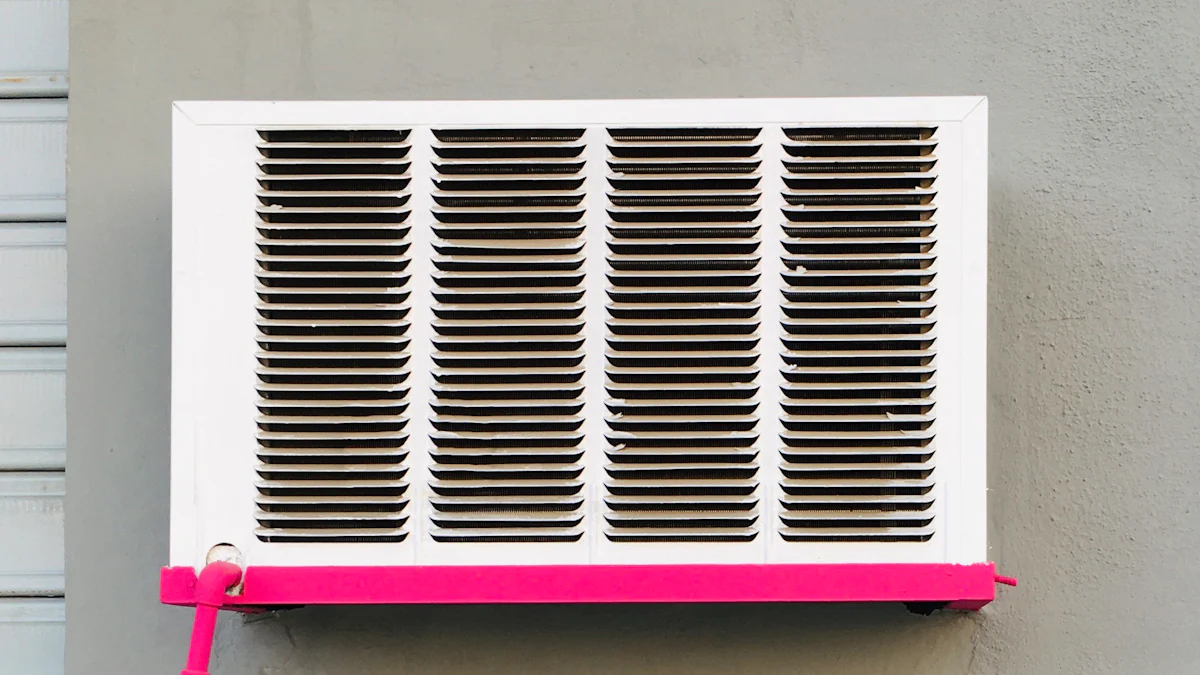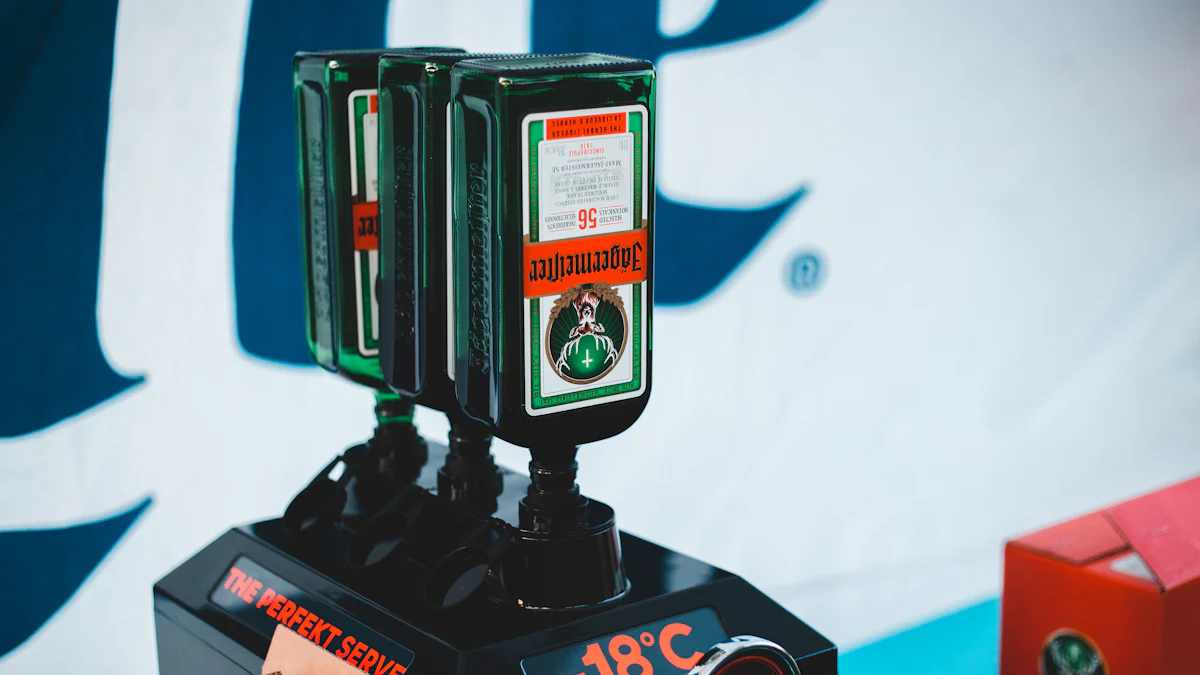How Cold Rooms Differ from Cool Rooms

A cold room serves as a temperature-controlled storage unit designed to preserve perishable goods over extended periods. It operates within a specific temperature range, often between -22°C and -25°C (-8°F to -13°F), ensuring precise cooling for items like seafood, meat, and flowers. In contrast, cool rooms maintain higher temperatures, typically between 0°C and 10°C, making them suitable for less sensitive goods. Understanding these differences helps you choose the right solution for your storage needs, whether you aim to extend shelf life or maintain product quality.
Key Takeaways
Cold rooms operate at temperatures between -22°C and -25°C, making them essential for long-term storage of highly perishable items like frozen meats and pharmaceuticals.
Cool rooms maintain a temperature range of 0°C to 10°C, ideal for short-term storage of less sensitive goods such as fruits, vegetables, and beverages.
Understanding the specific storage needs of your products is crucial for choosing between cold rooms and cool rooms, ensuring optimal preservation and quality.
Regular maintenance of both cold and cool rooms is vital for efficiency; tasks include cleaning, inspecting seals, and monitoring humidity levels.
Energy efficiency is a key consideration; modern cold rooms use advanced technologies to reduce energy consumption, while cool rooms naturally require less energy due to their higher temperature settings.
Customization options for cold rooms allow businesses to tailor storage solutions to their specific needs, enhancing operational efficiency.
Both cold and cool rooms serve distinct industries, from food processing to pharmaceuticals, highlighting their versatility in meeting diverse storage requirements.
Temperature Ranges

Understanding the temperature ranges of cold rooms and cool rooms is essential for selecting the right storage solution. Each type of room serves a specific purpose, determined by its ability to maintain precise temperature levels.
Cold Room Temperature Range
Cold rooms are designed to operate at significantly low temperatures, making them ideal for preserving highly perishable items. These rooms typically maintain temperatures between -22°C and -25°C (-8°F to -13°F). This range ensures long-term storage for sensitive goods like frozen meats, seafood, and certain pharmaceutical products. For example, walk-in freezers, a type of cold room, are commonly used in industries that require extended preservation of food or medical supplies. By maintaining such low temperatures, cold rooms prevent spoilage and extend the shelf life of stored items.
"Cold rooms operate at lower temperatures between -22°C and -25°C, ideal for long-term storage of sensitive items."
This capability makes cold rooms indispensable for businesses that handle frozen goods or require strict temperature control.
Cool Room Temperature Range
Cool rooms, on the other hand, maintain higher temperatures compared to cold rooms. Their typical range falls between 0°C and 10°C (32°F to 50°F). This makes them suitable for storing less temperature-sensitive items like fruits, vegetables, dairy products, and beverages. Unlike cold rooms, cool rooms are often used for short-term storage or to keep items fresh before consumption or further processing. For instance, chilled storage rooms, a type of cool room, are perfect for preserving the quality of produce and dairy without freezing them.
Cool rooms provide flexibility in storage, as their temperature settings can vary slightly depending on the specific needs of the stored goods. This adaptability makes them a popular choice for restaurants, grocery stores, and catering businesses.
Applications
Understanding the applications of cold rooms and cool rooms helps you determine which option aligns with your specific storage needs. Each serves distinct purposes across various industries, ensuring optimal preservation and quality of stored goods.
Uses for Cold Rooms
Cold rooms play a vital role in industries that require strict temperature control to preserve perishable items. These rooms are indispensable in food industries, where they store large quantities of frozen goods like meat, seafood, and ready-to-eat meals. By maintaining extremely low temperatures, cold rooms prevent spoilage and extend the shelf life of these products. For example, restaurants and food processing facilities rely on cold rooms to keep their inventory fresh and safe for consumption.
In the pharmaceutical sector, cold rooms ensure the stability of temperature-sensitive medicines, vaccines, and laboratory specimens. These controlled environments protect the integrity of medical supplies, making them essential for hospitals, research labs, and pharmaceutical companies. Additionally, cold rooms support manufacturing processes by providing the necessary climate conditions for certain products, such as chemicals or cosmetics, to maintain their quality during production.
"Cold rooms are critical for preserving perishable goods and maintaining product quality in industries like food and pharmaceuticals."
The versatility of cold rooms extends to other sectors, including floristry, where they keep flowers fresh for extended periods. Whether you operate a business or manage a supply chain, a cold room offers a reliable solution for long-term storage and preservation.
Uses for Cool Rooms
Cool rooms cater to industries that require moderate temperature control for short-term storage. These rooms are ideal for keeping fruits, vegetables, dairy products, and beverages fresh without freezing them. Grocery stores and catering businesses often use cool rooms to store produce and perishable items before they reach consumers. By maintaining temperatures between 0°C and 10°C, cool rooms help retain the natural flavor and texture of food products.
In addition to food storage, cool rooms serve as practical solutions for events and hospitality services. They provide temporary storage for drinks, desserts, and other items that need to stay chilled during functions. Cool rooms also benefit florists and retail businesses by preserving flowers and other temperature-sensitive goods for short durations.
Cool rooms offer flexibility in their design and usage. You can adjust their temperature settings to suit the specific requirements of your stored items. This adaptability makes them a popular choice for businesses that prioritize freshness and quick turnover of inventory.
"Cool rooms are perfect for short-term storage, ensuring freshness and quality for less sensitive goods like produce and beverages."
Whether you need to store food, beverages, or flowers, a cool room provides an efficient and cost-effective solution for maintaining product quality.
Design and Features

Structural Differences
The structural design of cold rooms and cool rooms reflects their distinct purposes. Cold rooms are built with heavy-duty insulation to maintain extremely low temperatures. This insulation minimizes heat transfer, ensuring the interior remains consistently cold. The walls, floors, and ceilings of cold rooms often feature thick, high-density panels made from materials like polyurethane or polystyrene. These materials enhance thermal efficiency and prevent moisture buildup, which is crucial for preserving perishable goods over long periods.
Cool rooms, in contrast, have lighter insulation compared to cold rooms. Their design focuses on maintaining moderate temperatures rather than freezing conditions. The panels used in cool rooms are thinner but still effective in controlling temperature fluctuations. Cool rooms also incorporate ventilation systems to ensure proper air circulation, which helps maintain the freshness of stored items like fruits, vegetables, and beverages. This structural difference makes cool rooms more suitable for short-term storage needs.
Both cold rooms and cool rooms come in various sizes to accommodate different storage requirements. You can find compact units for small businesses or large walk-in facilities for industrial use. Customization options allow you to tailor the structure to your specific needs, whether you require additional shelving, adjustable compartments, or specialized doors for easy access.
"Cold rooms feature heavy-duty insulation for extreme temperatures, while cool rooms prioritize moderate temperature control with lighter insulation."
Functional Differences
The functionality of cold rooms and cool rooms sets them apart in terms of performance and application. Cold rooms are engineered to provide precise temperature and humidity control. Advanced refrigeration systems in cold rooms ensure consistent cooling, even in demanding environments. These systems often include features like adjustable temperature settings, moisture prevention mechanisms, and energy-efficient compressors. For example, a cold room can maintain temperatures as low as -25°C (-13°F), making it ideal for storing frozen meats, seafood, and pharmaceutical products.
Cool rooms, on the other hand, focus on flexibility and adaptability. They are designed to keep items chilled without freezing them. Temperature ranges in cool rooms typically fall between 0°C and 10°C (32°F to 50°F), which is perfect for preserving the quality of fresh produce, dairy products, and beverages. Cool rooms often include adjustable shelving and customizable temperature zones, allowing you to store a variety of items with different cooling requirements. Their user-friendly design makes them a popular choice for restaurants, grocery stores, and event organizers.
Another key functional difference lies in energy consumption. Cold rooms, due to their lower temperature requirements, consume more energy compared to cool rooms. However, modern cold rooms are equipped with energy-efficient technologies that help reduce operational costs. Cool rooms, with their moderate temperature settings, naturally require less energy, making them a cost-effective solution for businesses with short-term storage needs.
"Cold rooms excel in precise temperature control and long-term storage, while cool rooms offer flexibility and energy efficiency for short-term use."
Maintenance and Energy Efficiency
Maintenance Requirements
Proper maintenance ensures the longevity and efficiency of both cold rooms and cool rooms. Regular upkeep minimizes breakdowns and helps maintain optimal performance. For cold rooms, you should focus on inspecting the refrigeration system, cleaning condenser coils, and checking door seals for any wear or damage. These steps prevent temperature fluctuations that could compromise stored goods. Additionally, monitoring humidity levels and defrosting the system when necessary keeps the environment stable for long-term storage.
Cool rooms require similar attention but with less intensity due to their moderate temperature range. Cleaning the interior surfaces and ensuring proper air circulation are essential tasks. You should also check the insulation panels and ventilation systems to avoid energy loss. Routine inspections of the cooling unit help identify potential issues early, reducing the risk of costly repairs.
"Regular maintenance not only extends the lifespan of your storage unit but also ensures consistent performance and energy efficiency."
By following a maintenance schedule, you can avoid unexpected failures and maintain the quality of your stored items.
Energy Efficiency
Energy efficiency plays a crucial role in the operation of cold rooms and cool rooms. Modern cold rooms incorporate advanced technologies to reduce energy consumption. Features like high-efficiency compressors, LED lighting, and polyurethane foam insulation enhance thermal performance while lowering operational costs. For instance, using vacuum-insulated panels and automated doors minimizes heat transfer, keeping the interior temperature stable with less energy.
Cool rooms, with their higher temperature range, naturally consume less energy compared to cold rooms. However, optimizing their energy use still requires attention. Installing electronically commutated fan motors and ensuring proper sealing of doors can significantly reduce power consumption. Adjustable temperature settings also allow you to tailor energy use based on the specific needs of your stored goods.
"A well-designed cold room or cool room can save up to 12% in energy costs through efficient insulation, advanced compressors, and smart technologies."
Adopting energy-efficient practices benefits both your budget and the environment. By reducing energy waste, you contribute to a more sustainable future while maintaining the quality of your stored products.
Understanding the differences between cold rooms and cool rooms helps you make informed decisions for your storage needs. Cold rooms excel in maintaining extremely low temperatures, making them ideal for preserving perishable goods like frozen meats and pharmaceuticals. Cool rooms, with their moderate temperature range, are better suited for short-term storage of items like fruits and beverages. When choosing between the two, consider your industry requirements, the type of goods you need to store, and the desired temperature range. Selecting the right option ensures product quality and efficient storage solutions.
FAQ
What temperature should a cold room maintain?
The ideal temperature for a cold room depends on the type of product you plan to store. For example, frozen goods like meat or seafood require temperatures as low as -22°C to -25°C (-8°F to -13°F). On the other hand, items like fruits or vegetables may need higher temperatures, typically between 0°C and 10°C (32°F to 50°F). Always consider the specific properties of your products and any industry regulations that apply.
Tip: Consult storage guidelines for your goods to ensure optimal preservation.
What are the differences between chilled and freezing cold rooms?
Chilled cold rooms maintain a positive temperature range, usually between 0°C and 10°C (32°F to 50°F). These rooms are ideal for storing fresh produce, dairy, and beverages. Freezing cold rooms, however, operate at sub-zero temperatures, often as low as -20°C (-4°F) or lower. They are designed for long-term storage of frozen goods like meats and seafood.
Key takeaway: Chilled rooms keep items fresh, while freezing rooms preserve them for extended periods.
What types of cold rooms are available?
Cold rooms come in various types to meet different storage needs. Some common options include walk-in refrigerators, blast freezers, and modular cold rooms. Walk-in refrigerators are suitable for general cooling, while blast freezers rapidly lower the temperature of items to preserve their quality. Modular cold rooms offer customizable solutions for businesses with unique storage requirements.
Did you know? Modular cold rooms can be tailored to fit your space and storage needs.
How do I choose between a cold room and a cool room?
Your choice depends on the temperature requirements of your products. Cold rooms are better for items that need freezing or long-term storage, such as meats and pharmaceuticals. Cool rooms work well for short-term storage of less sensitive goods like fruits, vegetables, and beverages. Consider your industry, storage goals, and the shelf life of your products when making a decision.
What factors affect the cost of building a cold room?
Several factors influence the cost of constructing a cold room. These include the desired temperature range, cooling time, size, and insulation materials. For instance, a blast freezer with rapid cooling capabilities will cost more than a standard cold room. The type of refrigeration system and additional features, such as shelving or automated doors, also impact the price.
Pro tip: Plan your budget based on your specific storage needs to avoid unnecessary expenses.
Can I customize a cold room for my business?
Yes, cold rooms can be customized to suit your business needs. You can choose the size, temperature range, and additional features like adjustable shelving or specialized doors. Customization ensures that your cold room aligns with your storage requirements and operational goals.
Example: A restaurant might opt for a compact cold room with multiple compartments for different food items.
How often should I maintain my cold room?
Regular maintenance is essential to keep your cold room functioning efficiently. Tasks include cleaning condenser coils, inspecting door seals, and monitoring humidity levels. For freezing cold rooms, defrosting the system periodically prevents ice buildup. Routine checks help you avoid costly repairs and ensure consistent performance.
Reminder: Create a maintenance schedule to extend the lifespan of your cold room.
Are cold rooms energy-efficient?
Modern cold rooms incorporate energy-saving technologies like high-efficiency compressors, LED lighting, and advanced insulation. These features reduce energy consumption while maintaining optimal temperatures. Cool rooms, with their higher temperature range, naturally consume less energy compared to freezing cold rooms.
Fact: A well-designed cold room can save up to 12% in energy costs through efficient insulation and smart technologies.
What industries benefit most from cold rooms?
Cold rooms are widely used in industries like food processing, pharmaceuticals, floristry, and hospitality. Food businesses rely on cold rooms to store frozen goods and maintain inventory freshness. Pharmaceutical companies use them to preserve temperature-sensitive medicines and vaccines. Florists benefit from cold rooms by keeping flowers fresh for longer periods.
Insight: Cold rooms are versatile and cater to a wide range of industries with specific storage needs.
Can I convert an existing space into a cold room?
Yes, you can convert an existing space into a cold room with proper planning and equipment. Insulation, refrigeration systems, and temperature control units are essential components. Consult professionals to ensure the conversion meets your storage requirements and complies with industry standards.
Advice: Evaluate the space and its suitability for insulation and cooling before starting the conversion process.
See Also
Exploring Unique Aspects of Cold and Freezer Rooms
Grasping How Cold Rooms Operate Effectively
The Importance of Cold Rooms in Storage Solutions

